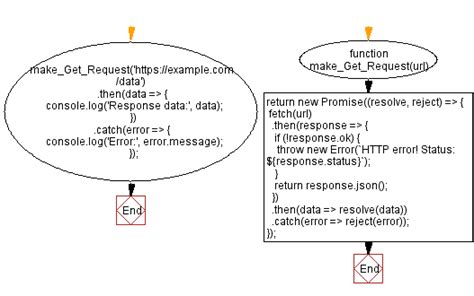
Java 使用 WebClient 调用外部接口:封装GET请求并支持Header与Form-Data参数

在现代Java开发中,与外部API的交互是常见的需求。WebClient 是Spring Framework(尤其是Spring WebFlux)提供的一个功能强大的、响应式的HTTP客户端,用于执行HTTP请求。相比于传统的RestTemplate,WebClient支持异步和非阻塞操作,适用于高并发和响应式编程场景。本文将详细介绍如何使用WebClient封装GET请求,支持传入自定义的请求头(Headers)和表单数据(Form-Data)参数,确保代码的可维护性和可复用性。
项目设置与依赖配置
首先,确保您的项目中已经添加了Spring WebFlux的依赖。根据您使用的构建工具(Maven或Gradle),添加以下依赖:
Maven
<dependency>
<groupId>org.springframework.boot</groupId>
<artifactId>spring-boot-starter-webflux</artifactId>
</dependency>
Gradle
implementation 'org.springframework.boot:spring-boot-starter-webflux'
这些依赖确保了WebClient及其相关功能能够在您的项目中正常使用。
WebClient 配置
为了便于管理和复用,建议将WebClient配置为一个Spring Bean。这样,您可以在整个应用程序中注入并使用同一个WebClient实例。
创建WebClient Bean
import org.springframework.context.annotation.Bean;
import org.springframework.context.annotation.Configuration;
import org.springframework.web.reactive.function.client.WebClient;
@Configuration
public class WebClientConfig {
@Bean
public WebClient webClient(WebClient.Builder builder) {
return builder
.baseUrl("https://api.example.com") // 设置基础URL
.defaultHeader(HttpHeaders.CONTENT_TYPE, MediaType.APPLICATION_JSON_VALUE) // 默认请求头
.build();
}
}
在上述配置中,我们创建了一个WebClient的Bean,并设置了基础URL和默认的请求头。您可以根据具体需求调整这些配置,例如添加认证信息或其他默认头信息。
封装GET请求方法
为了提高代码的可读性和复用性,建议将GET请求的逻辑封装成一个通用的方法。以下示例展示了如何封装一个支持传入自定义请求头和表单数据参数的GET请求方法。
GET请求封装工具类
import org.springframework.beans.factory.annotation.Autowired;
import org.springframework.http.HttpHeaders;
import org.springframework.http.MediaType;
import org.springframework.stereotype.Component;
import org.springframework.util.MultiValueMap;
import org.springframework.web.reactive.function.client.WebClient;
import reactor.core.publisher.Mono;
import java.util.Map;
@Component
public class WebClientUtil {
@Autowired
private WebClient webClient;
/**
* 发送GET请求
*
* @param endpoint 请求的具体路径
* @param headers 自定义请求头
* @param formParams 表单数据参数
* @param responseClass 响应类型
* @param <T> 泛型类型
* @return 响应结果的Mono
*/
public <T> Mono<T> sendGetRequest(String endpoint, Map<String, String> headers, MultiValueMap<String, String> formParams, Class<T> responseClass) {
return webClient.get()
.uri(uriBuilder -> {
uriBuilder.path(endpoint);
if (formParams != null) {
formParams.forEach(uriBuilder::queryParam);
}
return uriBuilder.build();
})
.headers(httpHeaders -> {
if (headers != null) {
headers.forEach(httpHeaders::add);
}
})
.accept(MediaType.APPLICATION_JSON)
.retrieve()
.bodyToMono(responseClass)
.onErrorResume(e -> {
// 处理错误,例如记录日志或返回默认值
return Mono.empty();
});
}
}
在上述工具类中:
- 方法参数:
endpoint: 请求的相对路径。headers: 一个Map<String, String>,包含所有需要添加的请求头。formParams: 一个MultiValueMap<String, String>,包含所有的表单数据参数。responseClass: 响应体的目标类型。- URI 构建:使用
UriBuilder动态添加查询参数,确保URL的正确性和编码。 - 添加请求头:如果
headers不为空,则将每个键值对添加到请求中。 - 错误处理:使用
onErrorResume捕获和处理请求过程中可能出现的错误。
使用示例
下面是一个完整的示例,展示了如何使用上述工具类发送GET请求,并传入自定义的请求头和表单数据参数。
示例代码
import org.springframework.beans.factory.annotation.Autowired;
import org.springframework.stereotype.Service;
import org.springframework.util.LinkedMultiValueMap;
import org.springframework.util.MultiValueMap;
import reactor.core.publisher.Mono;
import java.util.HashMap;
import java.util.Map;
@Service
public class ApiService {
@Autowired
private WebClientUtil webClientUtil;
public void fetchData() {
String endpoint = "/data";
// 设置请求头
Map<String, String> headers = new HashMap<>();
headers.put("Authorization", "Bearer your_token_here");
headers.put("Custom-Header", "CustomValue");
// 设置表单数据参数
MultiValueMap<String, String> formParams = new LinkedMultiValueMap<>();
formParams.add("param1", "value1");
formParams.add("param2", "value2");
// 发送GET请求
Mono<String> responseMono = webClientUtil.sendGetRequest(endpoint, headers, formParams, String.class);
// 处理响应
responseMono.subscribe(response -> {
// 处理成功的响应
System.out.println("Response: " + response);
}, error -> {
// 处理错误
error.printStackTrace();
});
}
}
在此示例中:
-
我们构建了一个包含身份验证和自定义头信息的
headers映射。 -
表单数据参数通过
MultiValueMap传递,支持多个值对应同一个键。 -
使用
sendGetRequest方法发送GET请求,并通过subscribe方法异步处理响应。
错误处理与异常管理
在与外部API交互时,错误处理是至关重要的。WebClient提供了多种方式来处理HTTP请求中的错误情况:
使用 onErrorResume
.retrieve()
.bodyToMono(String.class)
.onErrorResume(e -> {
// 记录错误日志
log.error("请求失败: {}", e.getMessage());
// 返回默认值或空的Mono
return Mono.empty();
});
该方法允许您在发生错误时执行特定的逻辑,例如记录日志、返回默认值或进行其他补救措施。
使用 onStatus 处理HTTP状态码错误
.retrieve()
.onStatus(HttpStatus::is4xxClientError, clientResponse -> {
return Mono.error(new RuntimeException("客户端错误: " + clientResponse.statusCode()));
})
.onStatus(HttpStatus::is5xxServerError, clientResponse -> {
return Mono.error(new RuntimeException("服务器错误: " + clientResponse.statusCode()));
})
.bodyToMono(String.class);
通过onStatus方法,您可以根据HTTP响应的状态码来决定如何处理错误,例如区分4xx客户端错误与5xx服务器错误。
同步与异步请求处理
WebClient支持异步和非阻塞的请求处理,这使其在高并发场景下表现出色。然而,有时您可能需要同步地等待请求的完成。在这种情况下,可以使用block()方法:
String response = webClient.get()
.uri("/data")
.retrieve()
.bodyToMono(String.class)
.block(); // 阻塞直到获得响应
然而,阻塞操作会失去异步编程的优势,因此在高并发或响应式应用中,推荐使用Mono和Flux进行非阻塞处理和响应式编程。
高级功能与最佳实践
WebClient不仅支持基本的GET请求,还提供了丰富的功能,帮助开发者更高效地与外部API交互:
全局请求头配置
@Bean
public WebClient webClient(WebClient.Builder builder) {
return builder
.baseUrl("https://api.example.com")
.defaultHeader(HttpHeaders.CONTENT_TYPE, MediaType.APPLICATION_JSON_VALUE)
.defaultHeader("Authorization", "Bearer your_token_here")
.build();
}
通过在WebClient的构建器中配置默认请求头,可以确保所有请求都会自动包含这些头信息,减少重复代码。
连接池管理与性能优化
为了提高性能,尤其是在高负载情况下,合理管理连接池和设置超时是关键:
import io.netty.channel.ChannelOption;
import io.netty.handler.timeout.ReadTimeoutHandler;
import io.netty.handler.timeout.WriteTimeoutHandler;
import reactor.netty.http.client.HttpClient;
import reactor.netty.tcp.TcpClient;
@Bean
public WebClient webClient(WebClient.Builder builder) {
TcpClient tcpClient = TcpClient.create()
.option(ChannelOption.CONNECT_TIMEOUT_MILLIS, 5000) // 连接超时5秒
.doOnConnected(connection -> {
connection.addHandlerLast(new ReadTimeoutHandler(5000))
.addHandlerLast(new WriteTimeoutHandler(5000));
});
return builder
.baseUrl("https://api.example.com")
.clientConnector(new ReactorClientHttpConnector(HttpClient.from(tcpClient)))
.build();
}
以上配置通过定制TcpClient,设置连接、读、写超时,确保请求不会因外部服务响应缓慢而无限挂起。
全局错误过滤器
import org.springframework.web.reactive.function.client.ExchangeFilterFunction;
@Bean
public WebClient webClient(WebClient.Builder builder) {
return builder
.baseUrl("https://api.example.com")
.filter(errorHandlingFilter())
.build();
}
private ExchangeFilterFunction errorHandlingFilter() {
return ExchangeFilterFunction.ofResponseProcessor(clientResponse -> {
if (clientResponse.statusCode().isError()) {
return clientResponse.bodyToMono(String.class)
.flatMap(errorBody -> Mono.error(new RuntimeException("Error: " + errorBody)));
}
return Mono.just(clientResponse);
});
}
通过ExchangeFilterFunction,可以在全局范围内处理所有请求的错误状态,统一管理异常逻辑。
性能优化建议
为了确保WebClient在各种场景下都能高效运行,以下是一些性能优化的建议:
-
连接池管理:合理配置连接池参数,如最大连接数和连接空闲时间,可提高高并发请求的处理能力。
-
超时设置:设置合理的连接、读取和写入超时,防止请求长时间挂起,影响系统整体性能。
-
响应缓存:对于重复的请求,可以考虑引入缓存机制,减少对外部接口的调用次数,提高响应速度。
-
异步处理:利用
Mono和Flux进行非阻塞异步处理,充分利用系统资源,提升吞吐量。
总结
使用Spring的WebClient进行外部API调用,能够显著提升Java应用程序的响应能力和并发性能。通过封装GET请求,并支持自定义请求头和表单数据参数,开发者可以实现简洁、可维护且高效的代码结构。此外,合理的错误处理和性能优化策略,确保了系统在各种负载下的稳定性和可靠性。
欲了解更多关于WebClient的详细信息和高级用法,您可以参考以下资料:
通过合理配置和封装,WebClient不仅能简化与外部API的交互,还能提升应用程序的整体性能和可维护性。
Last updated January 8, 2025